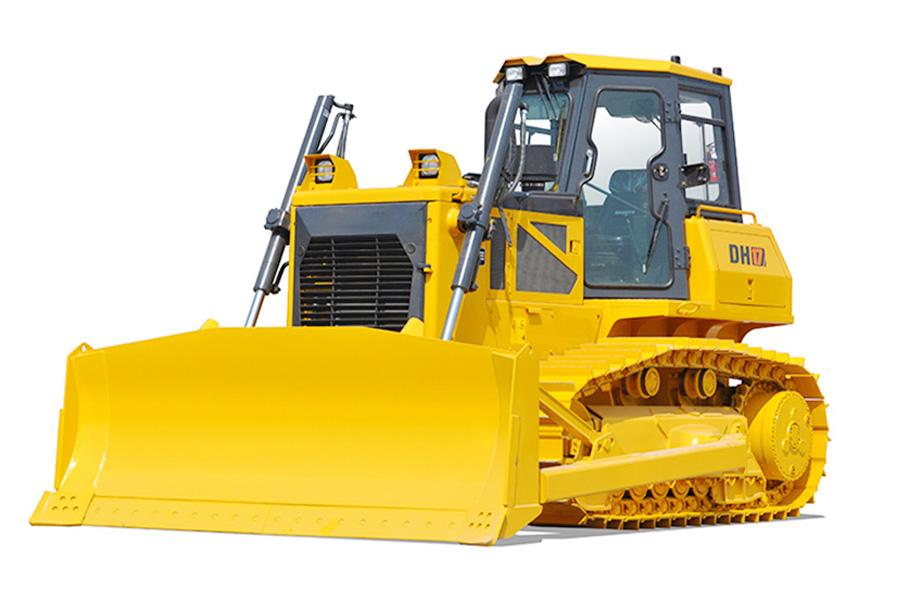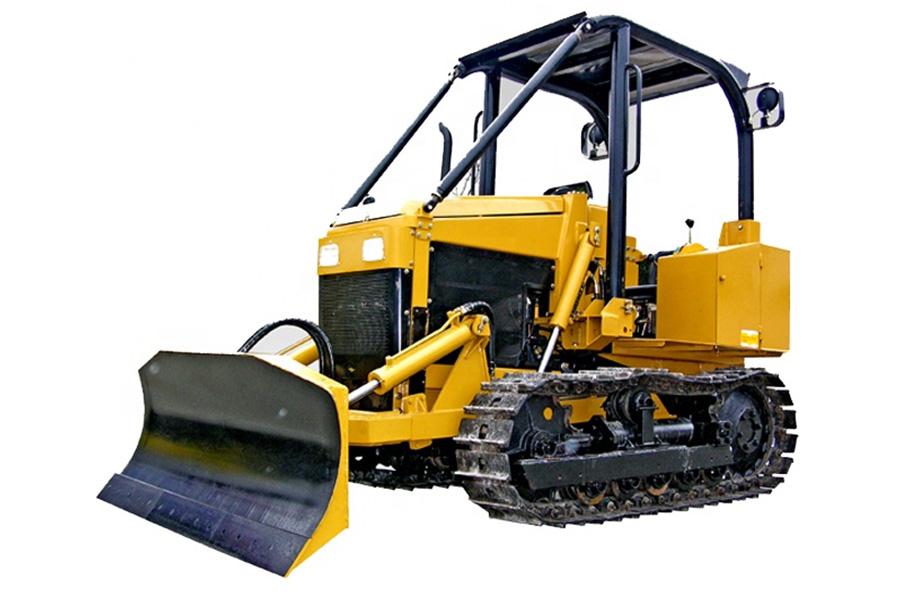Bulldozers are heavy moving equipment used for moving lots of dirt and leveling soil dumped from loading trucks in construction. However, they are not limited to construction because they can be used for short-range transportation to move heavy materials, road building, wrecking, and farming.
Bulldozers require huge capital investments one should not compromise when choosing the right machine for the task. Although many people primarily focus on the price of a bulldozer, there is more to these machines than the cost.
Pay more attention to the bulldozers’ specs to select a machine that will serve its purpose for many years.
Consider the guide below and learn how to choose the ideal bulldozer, whether the task is small or big.
Table of Contents
The global market for bulldozers
Factors to consider when choosing a bulldozer
Types of bulldozers
The global market for bulldozers
The global bulldozer market was valued at $7480.56 million in 2021 and is projected to grow at a compound annual growth rate (CAGR) of 5.3% between 2021 and 2027.
Many factors are contributing to this growth, including:
– Advanced technologies embedded in the machines, such as joysticks, sensors, power steering, power brakes, and controls, enhance their work efficiency and demand.
– Smart technologies adopted by these machines help even inexperienced operators to operate them within a short period, thus reducing training time and costs.
– Companies looking to minimize costs and increase job accuracy will undoubtedly demand these machines.
Factors to consider when choosing a bulldozer
Choosing the right bulldozer for your job requires knowledge of these machines and a few considerations.
Size and job being done
One has to decide on the size of the bulldozer to buy depending on the task at hand. Big is not always ideal.
Purchasing a big bulldozer for a small task will be a waste of investment, especially if the machine cannot fit into the site. Conversely, investing in a small bulldozer to handle big and complex tasks will be inefficient and result in an early machine breakdown.
Rated power
Tough jobs such as moving a large landfill or quarry with rocks require large machines with more engine power. On the other hand, bulldozers with less engine power will be sufficient if the task is light, like operating on the sand. Other factors that dictate the bulldozer’s engine power include the project’s soil quality, with challenging soil quality requiring high-powered engines.
Blade capacity
Bulldozers have attached blades to cut, shear, push, and roll materials in front of the tractor. Different bulldozers have different blade sizes, capacities, and adjustments to suit the job.
The blade type and capacity one chooses depends on the purpose of the bulldozer and the weight of materials to be pushed. For instance, if the material being handled is huge, the operator will need longer and larger blades that can push more materials with fewer passes.
Fortunately, most blades can be adjusted to increase their capacity and improve their flexibility to access even hard-to-reach areas.
Most bulldozers have straight blades (S-blades) ideal for grading. However, if the project involves more earth pushing, one will need a bulldozer with a U-blade or curved universal blade. These blades are often longer and larger to increase capacity. Snow removal and landscaping will require a power-angle-tilt blade to give the operator additional control.
Undercarriage
The terrain or environment in which the bulldozer will operate determines a suitable undercarriage. There are two types of undercarriages: standard and heavy duty. Bulldozers with standard undercarriage are often used for landscaping, construction, and other related works.
On the other hand, if the terrain is sloped or rocky, a heavy-duty undercarriage will be the best option. They are steel plated to provide maximum strength and handle tough projects. Therefore, one should know the terrain they want to work on before settling for a bulldozer.
Equipment safety
The safety of the equipment is an essential factor to consider, especially for construction projections. When purchasing a new bulldozer, ensure its attachments are as per the latest standards.
The machine should have an easy-to-understand manual to guide less experienced operators on how to fix the attachments and operate the machine.
When buying second-hand or used bulldozers, ensure it does not have specific off-book mods that can affect usability and safety. It is good practice to talk to the previous owner about how the equipment was used.
Budget
Whether one is investing in a new or used bulldozer, ensure it is worth the money. Of course, the used machine will cost less, but ensure it is in good condition and from a trusted vendor.
Although a new machine costs more, if properly maintained, it will result in a positive return on investment (ROI) in the long run. Do not hesitate to compare prices from different vendors to determine which machine is in good condition and fits the stipulated budget.
Ripper type
A ripper is located at the back of the bulldozer. It is often used to break up materials or dense earth. Some dozers have multiple-shank rippers, while others have a single design ripper.
The ripper type one chooses in a bulldozer depends on the job type. Suppose the job involves materials that need breaking down and moving. For instance, the farming projects would need multi-shank rippers to break up farmland for easy planting.
Operation weight
One should also consider the bulldozer’s weight. For instance, if the project is small, a small bulldozer with an operating weight of 18,000 lbs and a horsepower range between 80 and 92 will be enough.
Medium bulldozers have an operating weight of 46,160 lbs and provide up to 205 hp, while large bulldozers with a horsepower ranging from 600 to 850 have approximately 230,000 lbs of operating weight.
An appropriate bulldozer’s weight depends on work site space. Larger machines perform better on big projects but are challenging to transport and store.
Types of bulldozers
There are three main types of bulldozers one can buy that suit different job site applications. The right machine is needed for enhanced efficiency and safety of the project.
Wheel dozers

It is also called a tire bulldozer because it is fitted with a four-wheel-drive system. It is often bigger than a crawler and has a fully articulated hydraulic steering that moves on a smaller axis.
Wheel bulldozers are best suited for sensitive or soft grounds because the tires are not hard on the surfaces like tracks. They are also ideal for projects that require versatility and maneuverability.
Pros
- They are relatively cheaper than crawler bulldozers.
- Wheels make these bulldozers easy to move at a higher speed than tracks.
- They are easy to handle.
- Wheels are easier to change or repair than tracks.
Cons
- It is challenging for wheel dozers to pass certain high obstacles on site.
- The wheels may not have an adequate grip on snow.
Crawler dozers

Since they look like tractors, they are also called track dozers. They are used for moving heavy materials in site development, mining, and road construction.
Unlike the wheel dozer, crawler dozers can traverse irregular and dense terrain because they have better traction. Larger tracks are fitted with rippers to help with clearing dense terrains.
Pros
- They have improved traction on wet, snowy, or slippery surfaces.
- Tracks have high performance and are energy-efficient due to optimized traction systems.
- They work well on tough and sloppy terrains.
- They have a uniform surface weight distribution.
Cons
- They have low speed due to their more complex mechanical system.
- They are more challenging to handle than wheeled dozers.
- They have a relatively short life.
Mini dozers

A mini bulldozer is a smaller bulldozer commonly known as a compact bulldozer. It is ideal for projects requiring greater versatility and maneuverability and sites that are difficult for larger machinery to access. Since they are small, mini bulldozers can perform tasks like clearing lots and grading.
Pros
- They are energy-efficient.
- They are more flexible and mobile than crawler dozers—they can access areas that large dozers cannot reach.
- They feature technological enhancements and low emissions.
Cons
- They have less power than crawlers, making them less efficient in handling rough terrains.
Conclusion
Investing in heavy equipment like a bulldozer is a huge undertaking that requires the right information; otherwise, it could lead to a huge financial loss. Investors want to register a positive return on investment for these machines, hence the need for making informed decisions.




